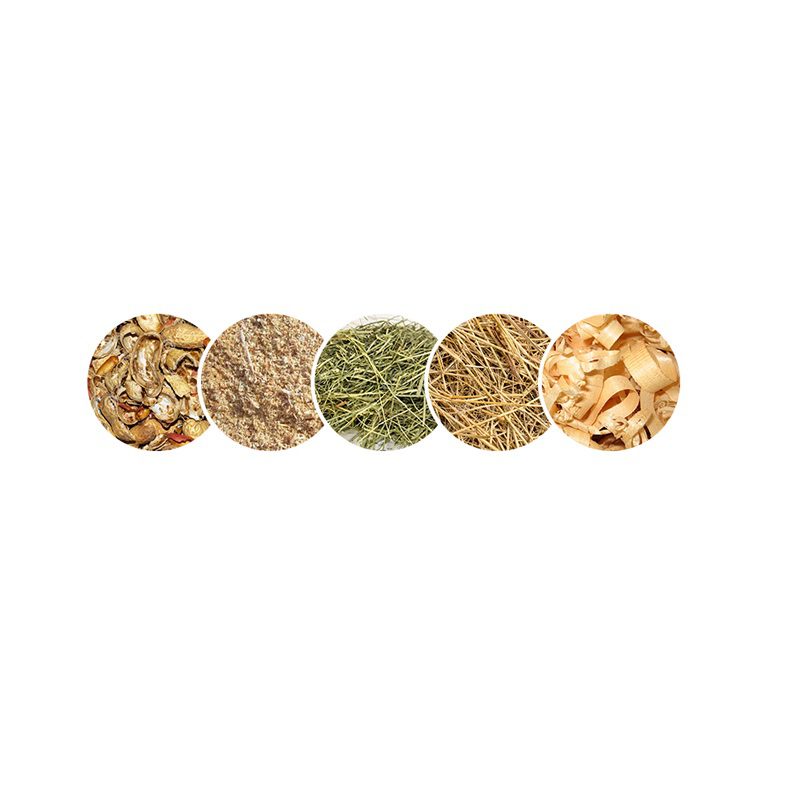
Different Types of Material Used For Pellet Production
More countries are turning to eco-friendly materials to produce environmentally friendly energy.
One such clean energy source is pellets.
There are different pellet types depending on the material used to produce them. For instance, pellets made from wood materials and crop waste are known as biomass pellets.
Other pellet types include animal feed pellets produced from fodder feedstock and fertilizer pellets made from cattle litter or poultry manure.
Material Used for Pellet Production
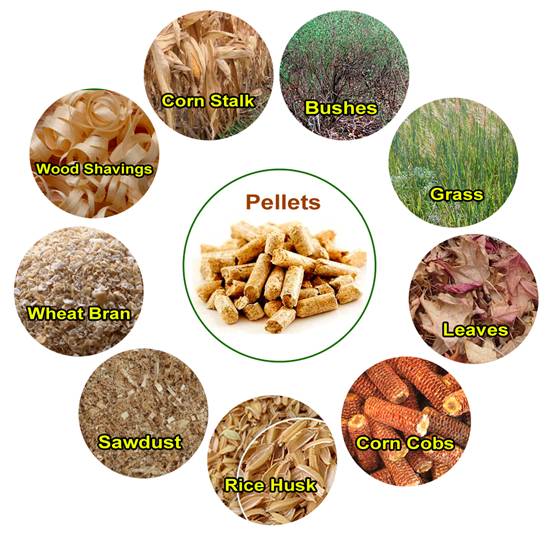
To reduce the dependency on fossil fuels and mitigate their negative effects on the environment, homeowners and commercial facilities are turning to pellets as a source of heating fuel.
The process of fuel pellet manufacturing involves grounding the biomass material and placing it under high pressure. The ground biomass is then forced through a round die with openings of a certain diameter which vary depending on the size of pellets required. Then it undergoes the extrusion process, which helps it form a solid mass.
The result is high-quality fuel pellets that are cylindrical, with a length of not more than 38 millimeters and a diameter of 6–8 millimeters. The pellets are also energy dense, dry, hard, and durable, and they leave low amounts of ash after combustion.
Although wood is the most commonly used raw material for pellet production, it isn’t the only suitable material for manufacturing pellet fuel. Readily available biomass raw materials such as switchgrass, agricultural waste material, and bamboo are also used for pellet fuel production.
Some of the requirements necessary for a material to be considered suitable for pellet fuel production include:
Water content – Raw materials used for pellet production are required to have a moisture content of 14% to 20%. Materials with higher moisture content make the pellets lose, while materials with very little moisture content are too hard to form during pelletization.
Adhesion force of the material – Pellet raw materials are supposed to bond together by themselves during pellet fuel production. Materials with little adhesive force will easily crack or get loose. However, to improve the adhesive force of some materials, you can use binders, ferment the material, or mix the material with other materials that have a high adhesive force
Mildew – Raw materials for pellet production shouldn’t have mildew. If they do, the cellulose gets broken down, and this makes the material unsuitable for pellet production. Besides, the mildew makes the color of the pellets turn black. Raw materials with mildew can, however, be mixed with 50% fresh sawdust for successful pelletization
Size of the material – The size of the raw material is important as the hole size of most pellet mill dies is between 6 and 10 mm. If the material is bigger than the pellet mill die hole size, you’re required to crush it before feeding it to the pellet press.
Wood
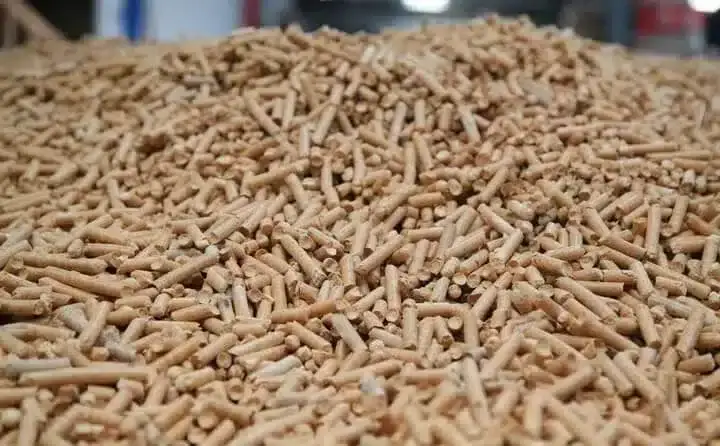
The most common source of material for the manufacture of fuel pellets is wood. Wood pellets are produced from a variety of wood waste materials, including wood shavings, wood chips, sawdust, and wood bark.
Wood pellets are considered carbon neutral as the amount of CO2 burnt when they’re used is equal to the amount absorbed by the tree when it’s growing. Other notable advantages of wood pellets as a fuel source include:
- They create no ash when burnt
- They are sustainable as they’re sourced from sustainable woodlands
- They have low moisture content meaning only minor energy is lost when burning off the moisture
- Wood pellets emit less SO2, dust, and NOX during combustion
The suitability of different wood waste materials as a raw material for making wood pellets is as explained below:
Fine sawdust – They have the best adhesion force and size for wood pellet production. Pellet presses that are fed with sawdust also consume low energy and are also characterized by stable pellet production
Wood scraps and shavings – Wood scraps, and wood shavings are too large for pellet production, which requires them to be crushed first so as not to block the pellet press. About 30% of small wood shavings are often mixed with 70% sawdust to improve their productivity
Wood dust – Wood dust is too light, which often leads to the blockage of the pellet press. Mostly, 50% wood dust is mixed with 50% sawdust for effective pelletization
Bamboo
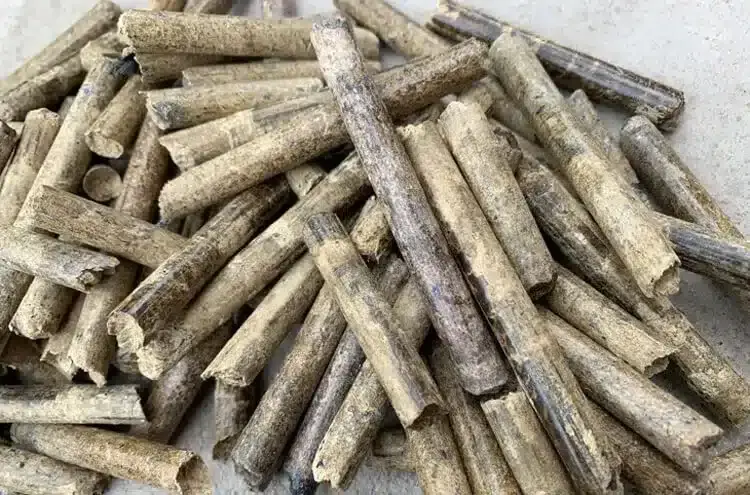
Bamboo is a suitable raw material for eco-efficient pellet production. It grows and matures very fast, and the bamboo plant is also widely distributed.
Besides, just like the tendencies of wood pellets, bamboo composition makes it suitable for pellet production as it has high lignin content that plays the role of a binding agent. Combustion of bamboo pellets also produces very little ash, which reduces air pollution.
Moreover, bamboo pellets are easy to transport due to their small volume and size, and they can be used for a wide range of applications, including in households, factories, and in the service field as a supply of heat
Sunflowers
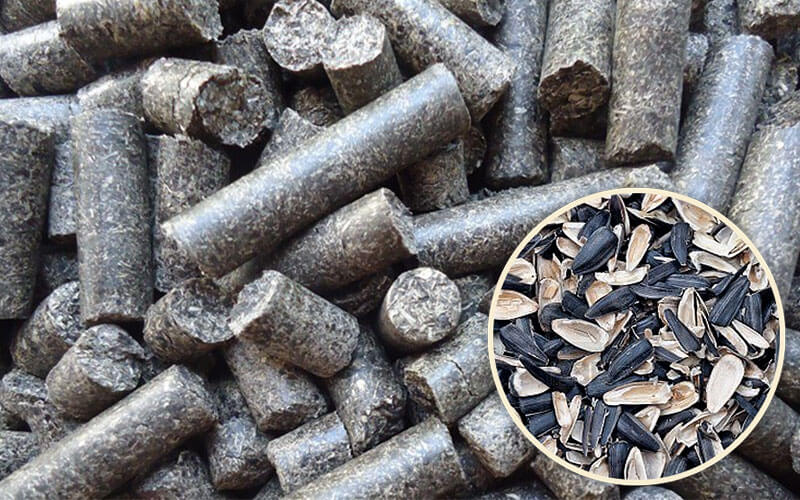
Sunflower husks, which are a byproduct of sunflower seeds, are another suitable raw material for pellet production.
Sunflowers are cultivated in many parts of the world, including Southeastern Europe, South America, China, Southern Africa, and the European part of Russia. The moisture content of sunflower husks is about 8.6%, and it has a low ash content of about 2.86% plus low sulfur contents of 0.14% making it suitable as a heating fuel.
Some of the other notable advantages of sunflower husk pellets include:
- Economical compared to the cost of gas, coal, or fuel oil
- Durable as sunflower husk pellets are hard with a durability index of 18
- With high calorific values at 4.3-4.5 kW/kg, sunflower husk pellets have a higher calorific value compared to wood. The additional energy produced during the burning of 1000 kg sunflower husk pellets is equivalent to the combustion of 685 liters of fuel or 1,600kg of timber
- Environmentally friendly, since the burning of sunflower husks pellets releases an amount of CO2 that is equivalent to the natural decomposition of biomass. Besides, the material’s low sulfur content and ash content means it produces little pollution during combustion
Agricultural Waste

Most agricultural waste is left in the field to rot, which results in the release of large amounts of greenhouse gas. Agricultural waste that is mostly made of straw is largely used as a raw material for eco-efficient pellet production. Due to its availability and fast rejuvenation rate, agricultural waste is a common pellet production material in Europe and Denmark.
Other agricultural waste materials used for pellet production include empty fruit bunch from oil palm, canola meal, oat, and canola hull, grape and citrus fruits seeds, corn waste, coffee, olive pits, grass, crop straw including wheat, rice, maize, and cotton straw.
Switchgrass
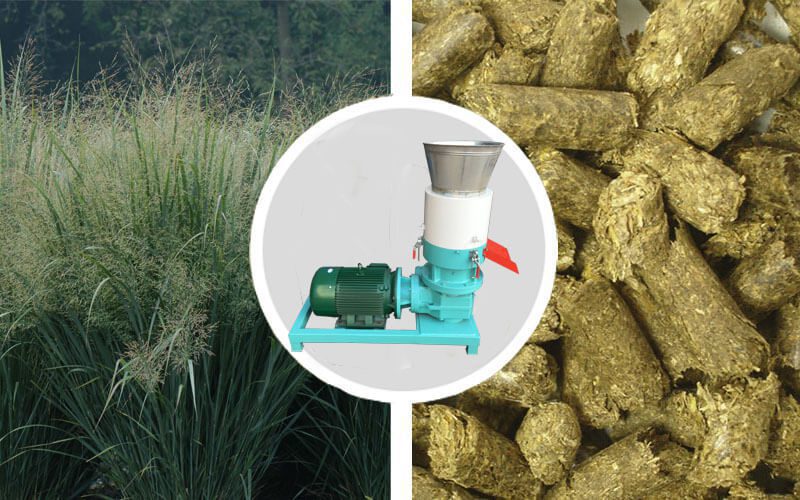
Panicum virgatum, simply referred to as switchgrass, is a plant commonly cultivated in the northern United States. It is adaptable to a variety of environments, and it has a high cellulose and lignin content, making it suitable for biofuel processing.
Switchgrass calorific value when burning is equivalent to 70-80% of coal heat of the same quantity. Further, switchgrass is affordable, and its collection and transportation costs are also low.
In addition to making pellets, switchgrass can also be used to produce briquettes and powder for commercial or household heat production.
Other Materials
Other biomass materials that are often used for pellet fuel production include:
- Alfalfa
- Waste papers
- Miscanthus
- Cardoon
- Digestate
Conclusion
Countries are increasingly using biofuel products as an alternative to fossil fuels to produce heat and power in the form of bio-pellets. Pellets are produced from compacting easily available and affordable biofuel materials such as wood, bamboo, switchgrass, agricultural waste, and sunflower husks. The result is an environmentally friendly energy source that is also affordable and sustainable.
Remember, if you’re looking for a pellet plant for household or commercial pellet fuel production, you can get it from us. We are a renowned manufacturer and supplier of high-quality pellet machines. We also offer onsite installation and professional training services around the world. Talk to us today for a reliable pellet machine.
Talk to An Expert
SHARE THIS POST
Talk to An Expert
